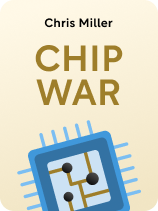
How did the Japanese semiconductor industry get such a foothold internationally? When was it at its strongest?
The Japanese semiconductor industry started with entrepreneurs like Akio Morita, founder of Sony, who saw the potential of semiconductors in consumer electronics. Understanding how this industry developed gives you a better sense of where the Japanese semiconductor industry is today.
Read on to learn about how Japan’s economy has fluctuated with the development of semiconductors and electronics.
The Emergence of Japan in the Semiconductor Industry
As the American chip industry began to take off in the 1950s and 1960s, Japanese entrepreneurs saw the potential of the technology to create new private fortunes—and transform their war-ravaged country into an economic powerhouse. These entrepreneurs would build the foundation for the Japanese semiconductor industry.
Visionary figures like Akio Morita, who founded Sony, recognized the potential of semiconductors for the consumer market—not just military applications. Sony started out as a small electronics shop in 1946, but its commitment to innovation and engineering excellence eventually led to the development of many groundbreaking products, including the first transistor radio in 1955 and the first all-transistor television in 1959. These products were more efficient, portable, and durable than their predecessors. The strategy of Japanese companies at this time, like Sony, was to license existing American technology. But they excelled at adapting American chips to use in consumer electronics such as radios, televisions, and handheld calculators.
Despite the economic challenge Japan represented to American companies, US geopolitical priorities encouraged Japanese semiconductor growth. Miller explains that this was because the US wanted an economically strong Japan, which it saw as an important regional counterbalance to and bulwark against the communist People’s Republic of China. Thus, the chip industry even in these early years was inextricably linked to geopolitical strategy.
| The Japanese Economic Miracle These semiconductor innovations occurred during Japan’s remarkable 40-year run of economic growth from the end of World War II to the end of the Cold War. This period is known to economic historians as the “Japanese economic miracle.” The country’s post-World War II economic success was due to a combination of factors that propelled Japan into becoming an economic powerhouse and provided fertile ground for the country’s nascent semiconductor industry to take root. Producer economic state: Japan adopted a producer economic state model, subordinating other national economic goals to catch up with and potentially surpass the US economy—an approach they sustained for nearly 40 years. Government support: The Japanese government played a role as a business adjunct and referee. It provided incentives like tax breaks, cheap credit, and administrative guidance to steer keiretsu (business networks) toward promising sectors. Other policies, including trade barriers and exchange rate management, also supported and protected Japanese companies. American support: The United States provided financial aid and resources to Japan through programs like the Marshall Plan, which helped Japan rebuild its infrastructure and industries. In addition, the US facilitated trade relations with Japan, providing access to American markets for Japanese goods. This access allowed Japanese industries to export products and generate foreign exchange, which was crucial for economic recovery. |
The Japanese Advantage
By the 1980s, Silicon Valley faced a formidable challenge from Japan. Japanese companies had not only caught up with American technology but were also no longer just licensing American technology—they were producing their own chips, and higher-quality ones at that. Meanwhile, innovations like the Sony Walkman, first introduced in 1979, underscored Japan’s prowess in consumer electronics.
Miller notes that Japanese chip companies also benefited from a confluence of macroeconomic forces that worked in their favor at this time. Thanks to low inflation and a booming economy, Japan had a glut of savings in the late 1970s, which was used to fund investments in new industries like semiconductor chips and consumer electronics. Because there was so much capital, firms could access business loans at low interest rates, fueling quick growth. At the same time, the Japanese government implemented protectionist policies, including tariffs and quotas on foreign chip shipments. This further tilted the playing field in Japan’s favor.
| Japanese Industrial Policy and the Semiconductor Industry Some researchers assert that the Japanese government’s support for its booming semiconductor industry at this time extended well beyond the tariffs and quotas that Miller describes. Japanese industrial policy in the semiconductor industry played a pivotal role in the global market share gain of Japanese semiconductor companies. Notably, there was a significant increase in funding for research and development (R&D) in semiconductor manufacturing equipment, which grew to 26% of Japan’s total R&D spending by 1977, up from just 2% at the beginning of the 1970s. The Japanese government also invested $300 million in the establishment of the Super LSI Technology Research Association, a public-private technology research project involving Japan’s six main computer companies. This collaboration allowed these rival companies to work together and share information, fostering innovation and the development of a common technology platform. This close state-private coordination propelled Japanese firms to dominate the global semiconductor market, with Japanese companies accounting for 51% of worldwide sales by 1988. |
The Japanese Begin to Falter
By the 1990s, the Japanese position in the semiconductor industry began to decline.
In addition to the new American technology and improved public-private coordination described above, economic events in Japan contributed to the nation’s relative decline in the semiconductor space. During the 1990s, the Japanese economy took a downturn, while the United States emerged as the dominant economic force of the decade.
Miller attributes this decline in Japan’s economic prowess to several factors, including an excess of cheap capital and overinvestment. With such easy access to capital, Japanese firms found themselves less compelled to compete on the basis of quality. It made more sense for many Japanese companies to churn out commodified and generic chips—which were already being produced more affordably and effectively by South Korean companies like Samsung and American firms like Micron. While profitable for a time, this complacency and loss of competitive edge left the Japanese chip industry in a weak position to adapt to coming technological changes.
| Japan’s Lost Decade The period of relative Japanese economic decline Miller describes is known to economic historians as “Japan’s Lost Decade”: a period of economic stagnation and financial crisis that extended from the early 1990s into the 2000s. The era was marked by a number of economic events and trends: Asset price bubble: The roots of Japan’s economic troubles can be traced back to the late 1980s when the country experienced an asset price bubble, particularly in the real estate and stock markets. Speculation drove up property and equity prices to unsustainable levels—until the bubble burst, triggering a financial crisis. Credit crunch: The financial crisis led to a credit crunch, where banks became reluctant to lend, and businesses and consumers faced difficulties accessing credit. Deflation: One of the defining features of Japan’s Lost Decade was deflation, a persistent decrease in the general price level. Falling prices discouraged consumer spending and business investment, as people expected goods and assets to become cheaper in the future. |

———End of Preview———
Like what you just read? Read the rest of the world's best book summary and analysis of Chris Miller's "Chip War" at Shortform.
Here's what you'll find in our full Chip War summary:
- The history and rise of the semiconductor industry in the US and abroad
- How national security became intertwined in the chip industry
- How a spurned TI employee grew the chip industry in Taiwan






